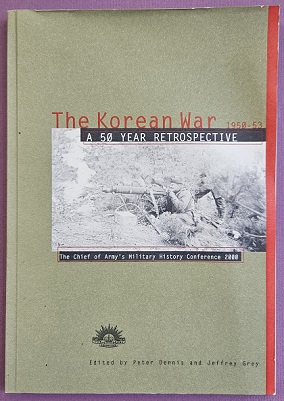Description
Title: Lance Corporal Horace William MADDEN GC
Author: Smith, Neil
Condition: Near Mint
Edition: 1st Edition
Publication Date: 1980
ISBN: N/A
Cover: Soft Cover without Dust Jacket – 19 pages
Comments: A brief account of Lance Corporal Horace William Madden GC.
Horace William (Slim) Madden (1924-1951), soldier, was born on 14 February 1924 at Cronulla, Sydney, son of Australian-born parents Charles Bernard Madden, labourer, and his wife Pearl Ellen, née Clemson. Giving his occupation as fruiterer’s assistant, Horace was mobilized in the Militia on 26 May 1942 and posted to the 114th Australian General Hospital, Goulburn. He transferred to the Australian Imperial Force in August 1943, and served in New Guinea with the 8th Field Ambulance and on Bougainville with the 5th Motor Ambulance Convoy Platoon. His next unit, the 253rd Supply Depot Platoon, was stationed on Morotai before being sent to Japan as part of the British Commonwealth Occupation Force. After his discharge in Sydney on 2 June 1947, Madden was employed as a male nurse at Morisset Mental Hospital for about two years and then as a moulder. On 19 August 1950 he enlisted for service in Korea with the 3rd Battalion, Royal Australian Regiment.
Joining 3RAR as a driver in November 1950, Madden volunteered to become a linesman in the Signals Platoon which worked in below-freezing temperatures to maintain communications with forward elements of the battalion. On the evening of 23 April 1951 the Chinese attacked 3RAR’s positions near Kapyong. Concussed by enemy fire, Madden was surrounded on the following day and forced to surrender. Corporal Bob Parker and Private Keith Gwyther were also captured during the battle. For the next few days the three of them were forced to recover wounded Chinese soldiers and were exposed to attacks by United Nations Command aircraft.
‘Slim’ Madden was 6 ft 0½ ins (184 cm) tall and—as his nickname indicated—of slender build. Although suffering the effects of concussion, he recovered quickly and helped Australian and other U.N. prisoners of war on their arduous march to the notorious ‘Bean Camp’. He showed defiance and refused to co-operate with the Chinese. They beat him repeatedly and subjected him to other forms of maltreatment, but he remained cheerful and optimistic. His health deteriorated, and his condition was exacerbated by his willingness to share the little food he had with men in a worse state than he. Madden was among the sick and wounded prisoners moved to ‘the Caves’ at Kangdong. In late October the Chinese forced them to march to Pingchong-Ni, a distance of some 140 miles (225 km). Madden collapsed and had to be transported by cart. Although he survived the journey, he died of malnutrition sometime between late November and early December 1951. After the Korean War had ended, his remains were reburied in the United Nations memorial cemetery, Pusan.
Gwyther said of him: ‘Slim was a real hero—and didn’t know it. He became a sort of legend. He didn’t try to be like that—it was just the way he was made. Nothing could make him co-operate with the enemy’. In 1955 Madden was posthumously awarded the George Cross. Parker and Gwyther had made repeated attempts to escape before their release in August 1953; both of them were mentioned in dispatches. The courage shown by these three Australian soldiers in the face of terrible hardships and threats of death was sustained by their indomitable spirit.





